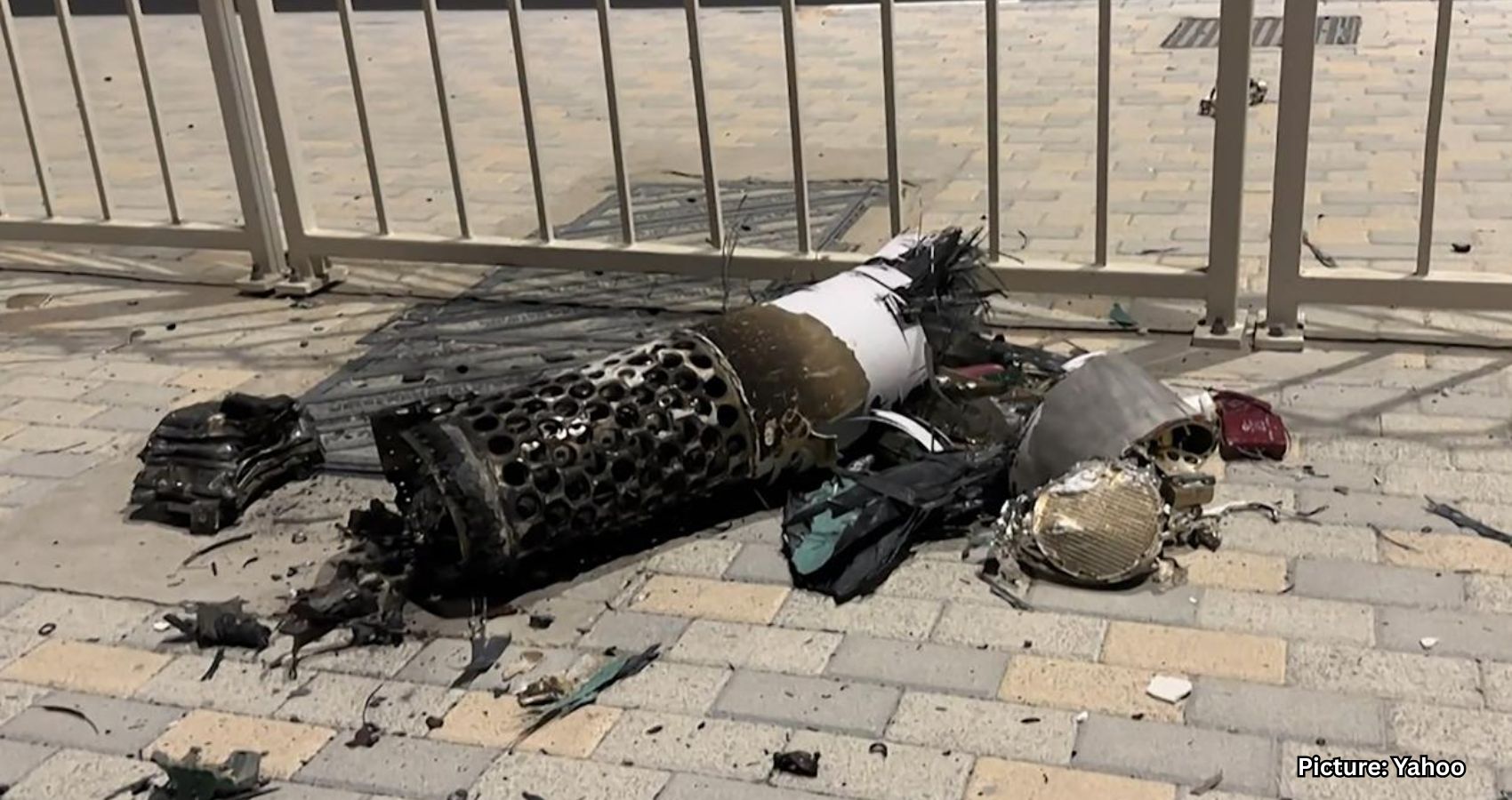Iran launched a barrage of ballistic missiles at a major U.S. military base in Qatar on Monday, marking its initial retaliation for the recent American airstrike that targeted crucial parts of Iran’s underground nuclear program. This marked a sharp escalation in tensions following a surprise U.S. operation over the weekend.
According to early reports, Iran fired a minimum of six missiles at targets in Qatar. Eyewitnesses on the ground in Doha, the nation’s capital, reported hearing explosions, while video footage circulated online appeared to show air defense systems being activated to intercept the incoming projectiles. The assault occurred shortly after Qatari authorities closed the country’s airspace. This preemptive move came in the wake of warnings from both the U.S. and U.K. embassies in Doha advising their citizens to remain indoors and seek immediate shelter.
In addition to the attack on the U.S. base in Qatar, Iranian state-controlled media claimed that Iran was also targeting American military installations in Iraq. However, a U.S. defense official speaking to Reuters clarified that, despite Iran’s claims, only the base in Qatar had come under direct attack.
Officials in Washington, including President Donald Trump’s team, were closely observing Iran’s reaction from the Situation Room in the White House, a senior official confirmed.
The Qatari government responded quickly and firmly to the missile strike. A spokesperson from the Qatari Foreign Ministry said that the country’s air defense systems had successfully intercepted all of the missiles launched by Iran and that there were no reported injuries or deaths. “We consider this a flagrant violation of the sovereignty of the State of Qatar, its airspace, international law, and the United Nations Charter,” said Majed al-Ansari, the ministry’s spokesperson, in a statement posted on X. He added, “We affirm that Qatar reserves the right to respond directly in a manner equivalent with the nature and scale of this brazen aggression, in line with international law.”
Given the weekend’s attacks, the targeting of Qatar—particularly the al-Udeid air base—had been anticipated. Al-Udeid, which was constructed in the mid-1990s, has long served as a strategic hub for U.S. military operations in the region. It acts as the forward headquarters for the U.S. Central Command and has played a pivotal role in numerous American military campaigns in the Middle East over the past two decades.
Approximately 10,000 American personnel are stationed at al-Udeid. The base also supports operations for the Royal Air Force and the Qatari military. Notably, in preparation for the recent escalation, U.S. aircraft had been relocated from the base in the days leading up to America’s joint offensive with Israel targeting Iranian nuclear sites.
In a potentially significant revelation, The New York Times reported that Iran may have coordinated the retaliatory strikes with Qatar in advance to reduce the likelihood of casualties. This strategy, if confirmed, echoes Tehran’s approach five years ago following the American assassination of one of its top military leaders, General Qassem Soleimani. At that time, Iran also launched a limited missile response that caused damage but was carefully calibrated to avoid provoking a full-scale conflict.
Such a symbolic form of retaliation may serve multiple purposes for Iran. Domestically, it can help appease public pressure for a strong response against perceived American aggression. Internationally, it keeps the door open for a diplomatic resolution to the ongoing nuclear standoff. By choosing a path of controlled escalation, Iran appears to be balancing its need to project strength with the strategic imperative to avoid a broader war.
Market reactions suggest that investors and analysts alike do not view Iran’s latest actions as a step toward wider regional conflict. Prices for benchmark crude oil in both London and New York markets dropped significantly following news of the missile attacks. This suggests that traders interpreted the situation as a measured response rather than the beginning of a major military escalation in the Persian Gulf, which is a key global energy hub.
While no American or Qatari personnel were injured and the damage to infrastructure appears to be minimal, the political implications of the strike are considerable. Iran’s decision to strike a base that hosts not just U.S. forces but also serves as a vital operational center for allied militaries in the region sends a clear signal of its readiness to retaliate—even if in a symbolic manner.
For its part, the U.S. administration has yet to release an official statement detailing its intended course of action following Iran’s missile launch. However, given the calculated nature of the Iranian strike and the apparent lack of casualties, some analysts believe that Washington may choose to de-escalate rather than respond with further military force.
This recent exchange highlights the fragile balance that characterizes U.S.-Iran relations, particularly when it comes to issues surrounding Iran’s nuclear ambitions. Over the past several years, tensions have repeatedly flared following incidents that range from the dismantling of the Iran nuclear deal to direct attacks on military personnel and infrastructure. Monday’s events are just the latest chapter in this volatile narrative.
As the situation develops, regional players and global powers alike will be watching closely for signs of either further confrontation or the possibility of a return to the negotiating table. Iran’s calculated missile launch, devoid of fatalities and seemingly coordinated to limit escalation, may be designed to offer exactly that choice.

